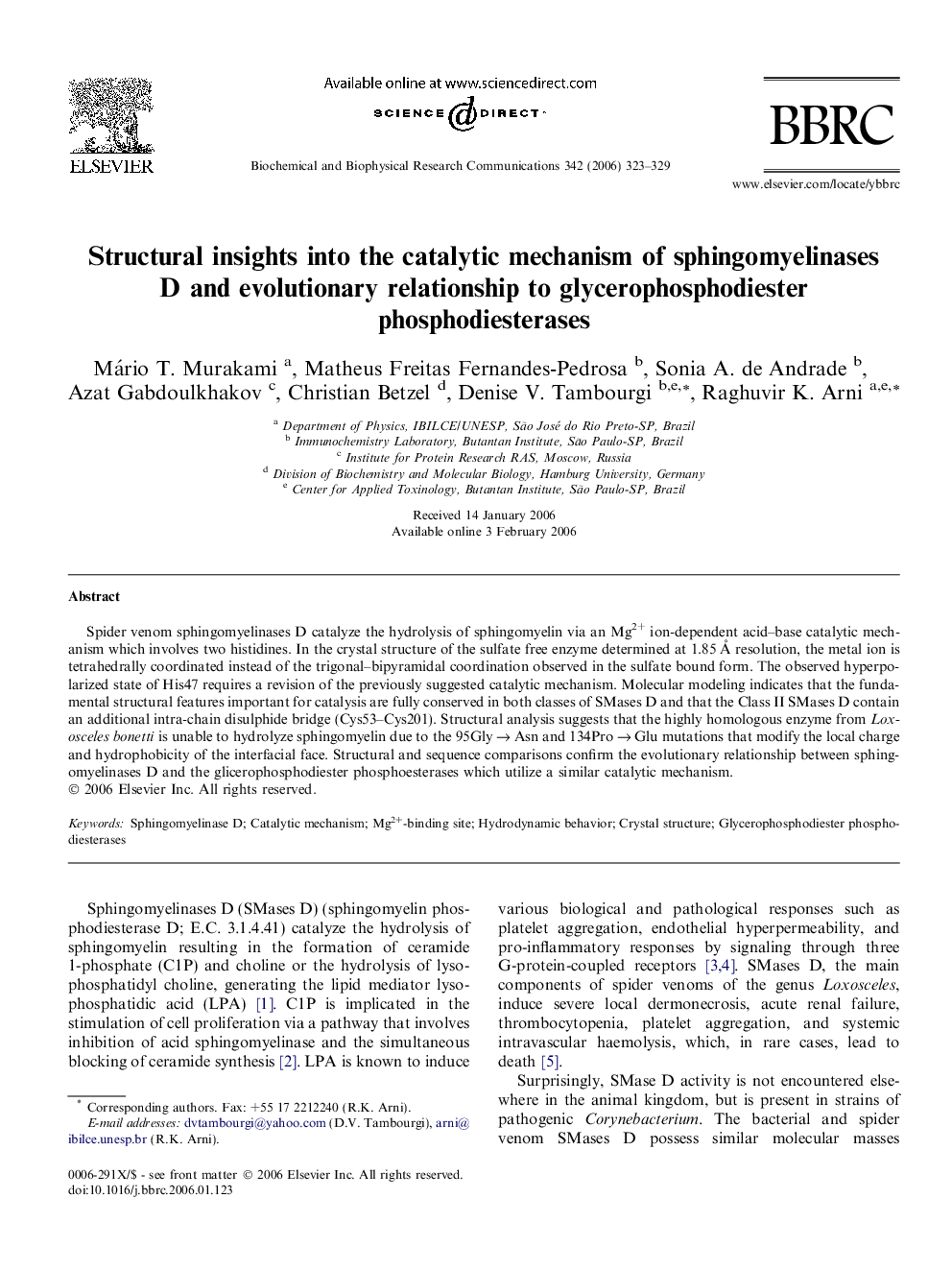| Article ID | Journal | Published Year | Pages | File Type |
|---|---|---|---|---|
| 1940208 | Biochemical and Biophysical Research Communications | 2006 | 7 Pages |
Spider venom sphingomyelinases D catalyze the hydrolysis of sphingomyelin via an Mg2+ ion-dependent acid–base catalytic mechanism which involves two histidines. In the crystal structure of the sulfate free enzyme determined at 1.85 Å resolution, the metal ion is tetrahedrally coordinated instead of the trigonal–bipyramidal coordination observed in the sulfate bound form. The observed hyperpolarized state of His47 requires a revision of the previously suggested catalytic mechanism. Molecular modeling indicates that the fundamental structural features important for catalysis are fully conserved in both classes of SMases D and that the Class II SMases D contain an additional intra-chain disulphide bridge (Cys53–Cys201). Structural analysis suggests that the highly homologous enzyme from Loxosceles bonetti is unable to hydrolyze sphingomyelin due to the 95Gly → Asn and 134Pro → Glu mutations that modify the local charge and hydrophobicity of the interfacial face. Structural and sequence comparisons confirm the evolutionary relationship between sphingomyelinases D and the glicerophosphodiester phosphoesterases which utilize a similar catalytic mechanism.
